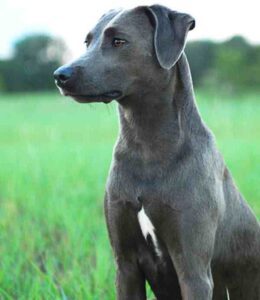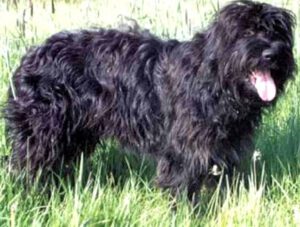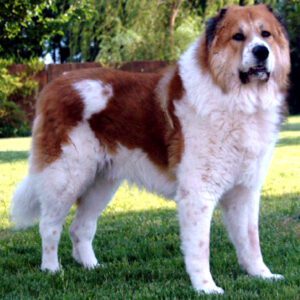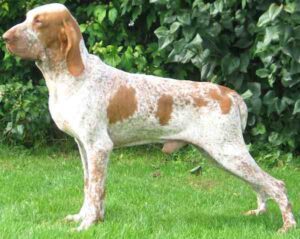The Borzoi dog is a very beautiful and large breed of domestic dog. It is similar in shape to a greyhound, and is also a member of the sighthound family. It is also known by some other names such as Barzoi, Russian wolfhound, Russian hunting sighthound and Russkaya psovaya borzaya.
The Borzoi dog breed was originated from Russia. It was descended from the dogs brought to Russia from central Asian countries. It was originated in the seventeenth Century by crossing Arabian greyhounds with a thick-coated breed.
The system by which Russians over the ages named their sighthounds was a series of descriptive terms, not actual names. Borzói is the masculine singular form of an archaic Russian adjective that means “fast”.
Borzáya sobáka (“fast dog”) is the basic term used by Russians, though sobáka is usually dropped. The name psovaya derived from the word psovina, which means “wavy, silky coat”, just as hortaya (as in hortaya borzaya) means shorthaired.
In modern Russian, the breed commonly called the borzoi is officially known as russkaya psovaya borzaya. Other Russian sighthound breeds are stepnaya borzaya (from the steppe), called stepnoi; and krimskaya borzaya (from the Crimea), called krimskoi.[1]
The most commonly used plural form is the regular formation borzois, which is the only plural cited in most dictionaries. However, the Borzoi Club of America and the Borzoi Club UK both prefer borzoi as the form for both singular and plural forms.
Borzoi Dog Characteristics
The Borzoi dogs are large in size with very beautiful appearance. The breed resemble some central Asian breeds such as the Afghan hound, Saluki and the Kyrgyz Taigan. Despite their size, the overall impression is of streamlining and grace, with a curvy shapeliness and compact strength.
The Borzoi dogs can generally be described as ‘long-haired greyhounds’. They come in virtually any color. Their coat is silky and flat, often wavy or slightly curly.
The long top-coat is quite flat, with varying degrees of waviness or curling. The soft undercoat thickens during winter or in cold climates, but is shed in hot weather to prevent overheating.
The Borzoi coat is unique, in it’s texture and distribution over the body. There should be a frill on it’s neck, as well as feathering on it’s hindquarters and tail.
The Borzoi dogs are large in size. Average height of the mature dog is between 30 and 33 inches at the withers for males, and between 27 and 31 inches for the females. Average live body weight of the mature dogs is between 34 and 48 kg for males, and between 25 and 41 kg for the females.
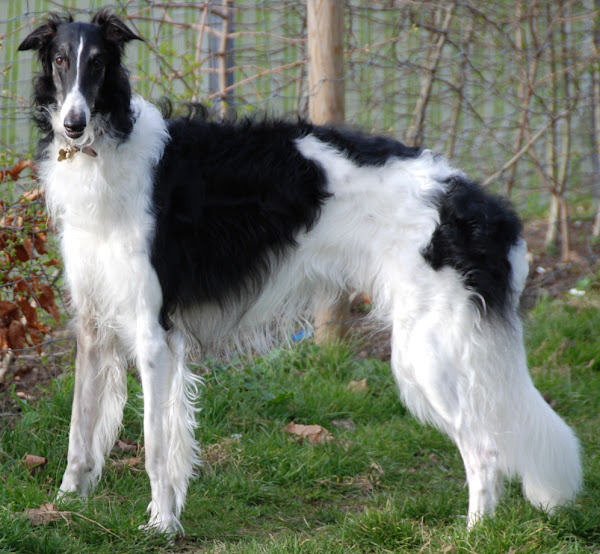
Temperament
Temperament or personality of the Borzoi dogs ranges from serious and stately to clownish. The Borzoi is quiet, sensible and intelligent as a companion dog. It prefers not to be left alone for long periods.
Reaction of the Borzoi dog to strangers ranges from aloof to friendly. In general, it is trusting of people and not shy.
Easygoing nature of these dog does not mean it is easy to train. It is an independent thinker and can be stubborn.
Although, temperament of the dogs is affected by a number of factors, including heredity, socialization and training.
The puppies with nice temperament are curious and playful, and willing to approach people and be held by them.
The Borzoi dogs need early socialization, just like every other dog breeds. They require exposure to many different people, sight, sounds and experiences, especially when they are young. Early socialization helps to ensure that your Borzoi puppy grows up to be a well-rounded dog.
Lifespan
Average lifespan of the Borzoi dog is between 11 and 15 years.
Feeding
How much a mature dog eats depends on it’s size, age, build, metabolism and activity level. Dogs are individuals, just like people, and they don’t all need the same amount of food.
The Borzoi dogs are large in size and pretty active. So, their diet should be formulated for a large sized breed with average exercise needs. You can also consult with a vet in your area for better recommendations.
Caring
Taking good care of the animals is very important for raising Borzoi dogs. The Borzoi are house dogs, and they like their comforts. Some dogs do best in a home with a yard, while others are fine simply being walked every day.
If you are considering a Borzoi dog for an apartment or condo, however, take into account whether you will need to carry the dog up and down the stairs if it is ever sick or injured and can not manage them on it’s own.
The Borzoi are generally high energy dogs, but their activity levels vary among individuals. Some will exercise themselves if turned out into a yard, while others are lazy and must be taken for a walk.
Most of the Borzoi will be satisfied with a 20 minute walk daily and the occasional opportunity to run full out in a safely fenced area.
Health
The Borzoi dogs are generally healthy and strong. But like all other dog breeds, they are also prone to certain health conditions.
Their common health problems include hip or elbow dysplasia, hypothyroidism, progressive retinal atrophy and von Willebrand’s disease. Always try to keep good contact with a vet in your area.
| Breed Name | Borzoi |
| Other Names | Also known by some other names such as Barzoi, Russian wolfhound, Russian hunting sighthound and Russkaya psovaya borzaya |
| Breed Size | Large |
| Height | Between 30 and 33 inches at the withers for males, and between 27 and 31 inches for the females |
| Weight | Between 34 and 48 kg for males, and between 25 and 41 kg for the females |
| Good as pets | Yes |
| Climate Tolerance | All climates |
| Color | Any color |
| Lifespan | Between 11 and 15 years |
| Good for children | Yes |
| Rarity | Common |
| Country of Origin | Russia |

